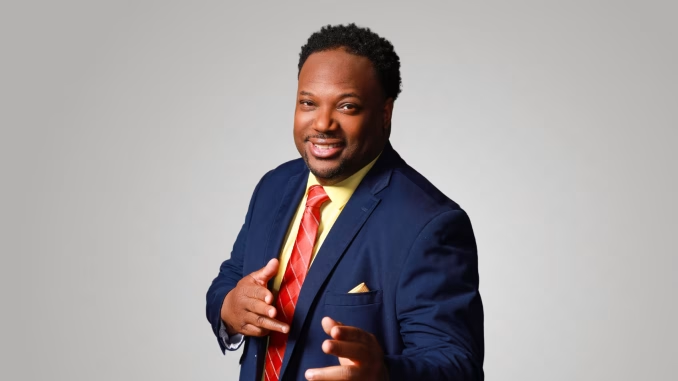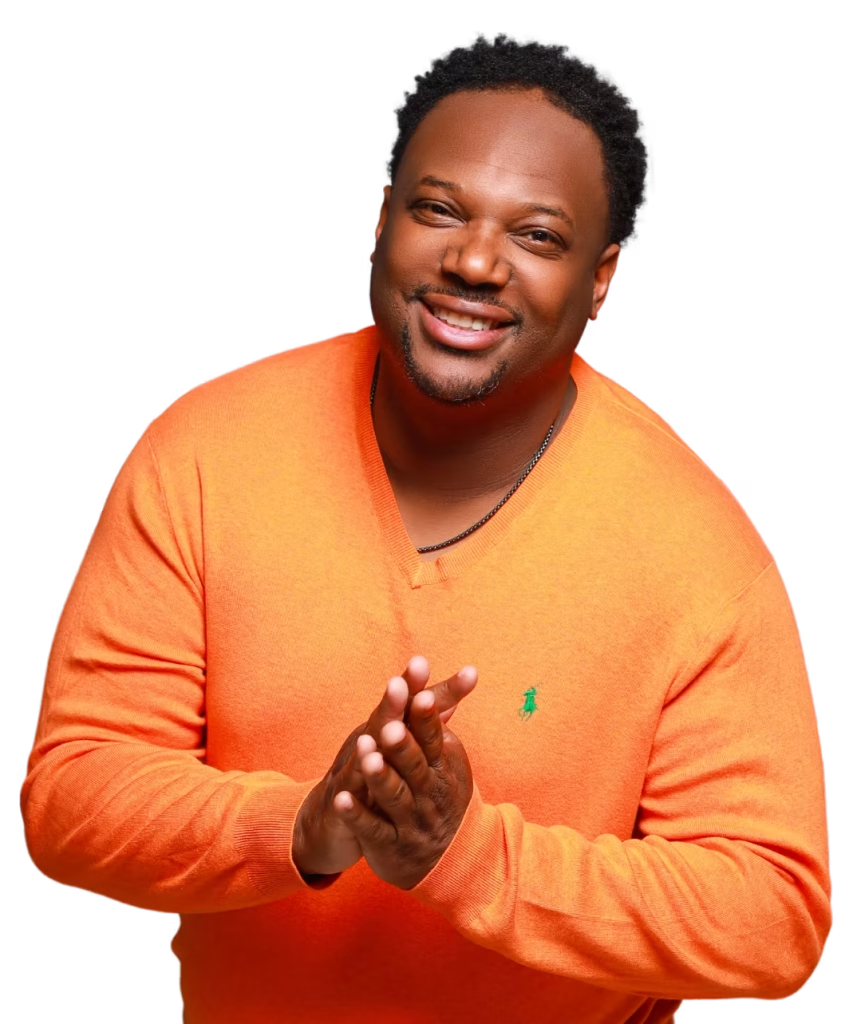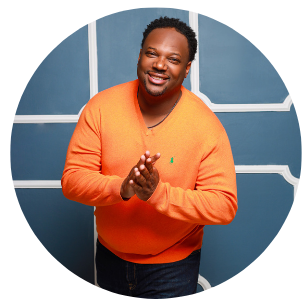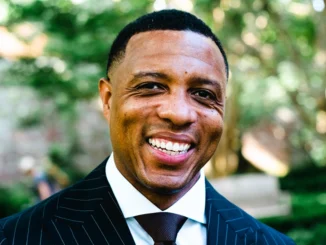
By Staff
Before we get started, a bit about my platform and “I Give Myself Permission” that grounds my work and how I show up in the world:
My career began with one-on-one therapy—sitting across from individuals, helping them untangle the weight they carried. I still love that work. It taught me that most people don’t struggle because they’re weak or incapable, but because they’re trapped by unspoken rules and invisible barriers. Over time, my work expanded into coaching executives, advising family businesses, and speaking to audiences worldwide. While those arenas may seem separate, they’re all connected by the same thread: helping people see the barriers holding them back and giving themselves permission to move beyond them.
“I Give Myself Permission” is more than a phrase—it’s a platform, a mission, and a message. It’s about naming the rules that say, you can’t rest, you can’t ask for help, you can’t want more, you can’t change family scripts, and realizing we don’t have to be bound by them. Once those barriers are visible, we can dismantle them. When individuals shift, cultures shift too. Families become healthier, leaders more human, and workplaces places where people thrive.
Permission is not indulgence—it’s freedom. Freedom to grow, to heal, to rest, to lead with authenticity. It’s also about giving others permission: to innovate, to be vulnerable, to be seen. That’s how we create cultures of belonging, not by enforcing invisible rules but by inviting people to bring their full selves.
At the core of my career is naming the fears we all share—fear of failure, of not being loved, of letting people down. Once we speak them, we realize we’re not alone. That’s why “I Give Myself Permission” is not just a message I share. It’s a practice I live.
Your career bridges executive coaching, family business advising, and mental health. How did you identify the need to bring these worlds together?
When I began practicing therapy over two decades ago, my focus was to help people understand that mental health matters. As a Black man, I didn’t see many people who looked like me talking about therapy, wellness, or relationships. The stigma was heavy, and I felt called to break through it.
As conversations around mental health became more public, I saw a new need emerge. Some people weren’t ready for therapy but were open to executive coaching. At the same time, leaders with therapists wanted a thought partner who could understand not only their personal well-being but also the weight of leading a business. My background allowed me to bridge both worlds.
That work expanded into family businesses and foundations—spaces where legacy, succession, and generational dynamics complicate leadership. My therapeutic training helped me untangle family relationships, while my business experience helped guide strategy and decisions. This wasn’t a sudden pivot but an evolution shaped by education, experience, and my own reality of balancing marriage, family, and entrepreneurship.
When working with executives, what are the most common leadership blind spots you help uncover?
The first blind spot is neglecting personal well-being. Leaders often push past exhaustion, ignoring stress until it surfaces in poor decision-making, strained relationships, or toxic workplace culture.
Another blind spot is underestimating the emotional ripple effect they have on their teams. Even when leaders think they’re being “professional,” their stress, avoidance, or irritability trickles down and shapes the culture.
A third blind spot is overidentifying with work at the expense of personal relationships. Many don’t realize the damage until there’s a crisis at home. I also help them see how emotions drive many “rational” business decisions. Leaders don’t need to suppress emotions; they need to become fluent in them.
Finally, I remind leaders they don’t have to do it alone. High achievers often equate asking for help with weakness. But the strongest leaders are those who build networks of support—through therapy, coaching, mentors, or peers. That shift makes decisions sharper, relationships stronger, and leadership more sustainable.
You’ve consulted with major corporations and family-owned businesses. What lessons do leaders often learn too late about communication and legacy?
The most common lesson is that legacy and succession are not the same. Legacy is what you build. Succession is who carries it forward. Too often, leaders conflate the two and avoid succession planning, clinging to their role because letting go feels like losing identity or impact.
In family businesses, succession is especially complex. It’s not just a business decision but a family conversation filled with questions of love, power, and expectation. Leaders may assume their children will carry the torch but rarely create the structure to make that transition successful.
Delaying these conversations doesn’t preserve legacy—it endangers it. By the time succession becomes urgent, relationships may be strained and younger leaders unprepared. When leaders start the dialogue early, invest in talent, and create space for innovation, they ensure the organization thrives beyond their tenure.
Many leaders excel in their careers but struggle in their personal lives. How do you help them integrate leadership skills with healthy relationships at home?
I often hear leaders say: “I can run a multimillion-dollar business, but I can’t figure out how to have a calm dinner with my spouse.” What makes them successful at work often undermines them at home. Efficiency at work feels like detachment at home. Decisiveness at work can feel dismissive to loved ones.
I help them realize they already have the skills—they just need to translate them. If you can listen to your team without interrupting, you can do the same with your teenager. If you can mentor employees with curiosity, you can bring that curiosity into your marriage instead of assuming you know what your partner needs.
Small shifts make a big difference. One client started treating family dinner like a non-negotiable meeting twice a week—no phones, no distractions. Within weeks, his wife felt she had her husband back, and his kids opened up more. That’s what integration looks like: applying the respect and attention you give colleagues to the people you love.
Ultimately, leadership at home is not about leading. It’s about showing your family that they are as much a priority as your work.
In your executive coaching, you emphasize resilience. What practical steps can leaders take to strengthen resilience in today’s fast-changing environment?
Resilience is not about pushing through at all costs—it’s about recovering and resetting when things get heavy.
The first step is rest. Many leaders pride themselves on sleeping four hours a night. That’s not strength—it’s unsustainable. Exhaustion shows up in decisions, tempers, and relationships.
The second step is reflection. Leaders often move from one crisis to the next without pausing. Even ten minutes a day of journaling, prayer, or silence changes how they process stress.
The third is connection. Leadership is isolating, but resilience grows in community—with mentors, peers, or friends who remind leaders they are more than their job.
Rest. Reflection. Connection. These three practices help leaders recover faster, lead steadier, and last longer.
You have worked with multigenerational family businesses. How do you help them balance the tension between tradition and innovation?
In family businesses, every decision carries layers beyond profit. For older generations, tradition represents sacrifice—the long nights and risks that built the company. For younger generations, innovation is not rejection but a way to make that sacrifice last in a new era.
I slow down the conversation and ask both sides what they are really trying to protect. Naming fears and hopes shifts the tone from confrontation to collaboration.
Practically, I encourage families to create safe spaces for experimentation, such as letting the next generation test ideas in smaller parts of the business. When these succeed, it builds trust. I also encourage younger leaders to honor the stories and sacrifices of those who came before them, deepening respect for the roots they’re building on.
The healthiest family businesses recognize that tradition provides the roots, while innovation provides the branches. Both are essential to growth.
Your signature talk, “I Give Myself Permission,” is powerful in corporate settings. Why do you think permission is such a vital leadership principle?
When I deliver this talk, the reaction is visceral. People exhale. Some tear up. Because so many live by invisible rules: I must always say yes. I must never struggle. I must know every answer.
Permission breaks those rules. It gives people space to lead as humans, not machines. I’ve seen leaders give themselves permission to rest, and they return with clarity and creativity. I’ve seen them say no, and suddenly their yeses carry more meaning. I’ve seen them embrace vulnerability, and their teams trust them more, not less.
Permission doesn’t stop with the individual. It creates a ripple effect. A leader who admits exhaustion gives the team permission to rest. A leader who asks for help gives permission for others to speak up. A leader who shares doubt gives permission for curiosity and innovation.
Some of the most powerful permissions are:
- Permission to rest.
- Permission to ask for help.
- Permission to change direction.
- Permission to be vulnerable.
At its heart, permission is freedom. Freedom to lead authentically, to live without sacrificing health or relationships, and to create cultures where people feel safe to be themselves. That’s what makes it transformative.
Looking at the future of leadership, what do you believe will separate good leaders from great leaders in the next decade?
Technical skills and intelligence will always matter, but they won’t be what separates good leaders from great ones. The difference will be how human leaders are willing to be.
Good leaders will react to change. Great leaders will step into discomfort, admit what they don’t know, and invite others into the process. They’ll build trust not by control but by authenticity.
Emotional depth will be a defining trait—leaders who can name and regulate emotions, repair conflict, and listen to perspectives different from their own. Courage will be another—especially the courage to change course when the old way no longer serves.
Good leaders will keep things running. Great leaders will build trust, create belonging, and lead change. And what people will remember most is not just what those leaders achieved but how it felt to be led by them.
Social Media
Dr. George James (Psy.D., LMFT, MBA)
CEO & Founder of George Talks LLC
Executive Coach | Licensed Marriage & Family Therapist | MBA | Assistant Professor |
Corporate & Media Consultant | Speaker | Author
www.GeorgeTalks.com




About George Talks, LLC
The mission of George Talks, LLC is to inspire, teach and empower interpersonal relationships by helping individuals to have fulfilling, meaningful and fruitful familial, business and intimate relationships. George Talks, LLC also seeks to help people overcome the individual and relational struggles and challenges that prevent them from maximizing their potential.
Through its innovative programs, events and resources George Talks, LLC will increase knowledge, skills, and efficacy and empower individuals, couples, families and businesses to actualize their full potential. Utilizing a model that allows individuals, couples and families to appropriately identify problem areas, repair past struggles and rebuild, we aim to promote strong, healthy, fruitful, productive and vibrant interpersonal relationships.








